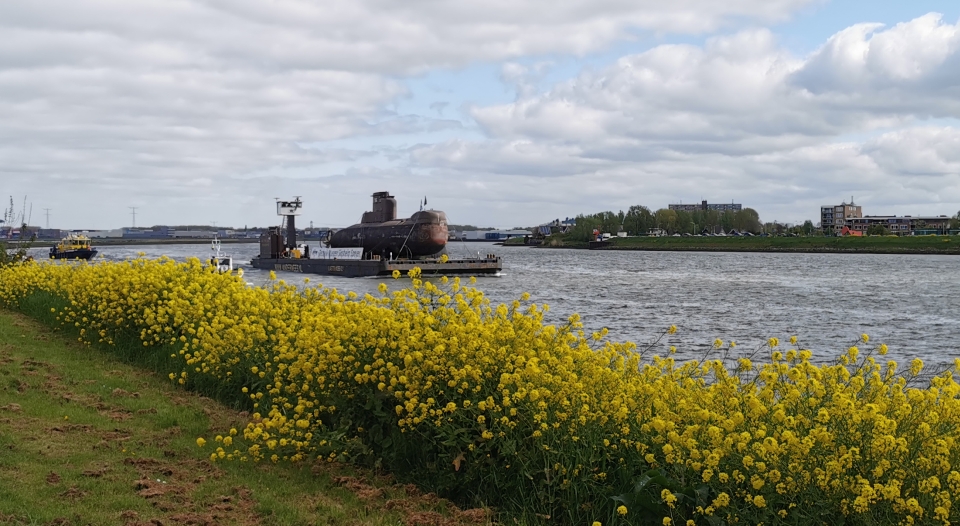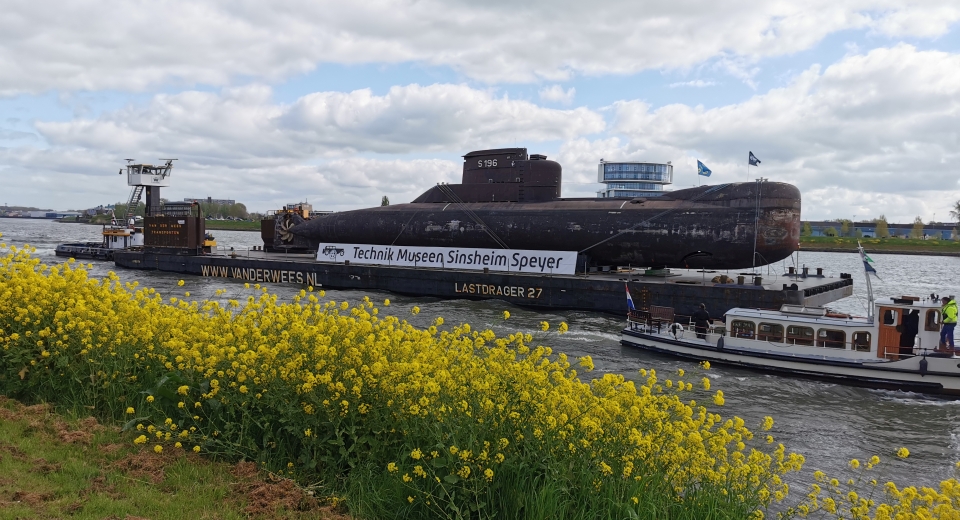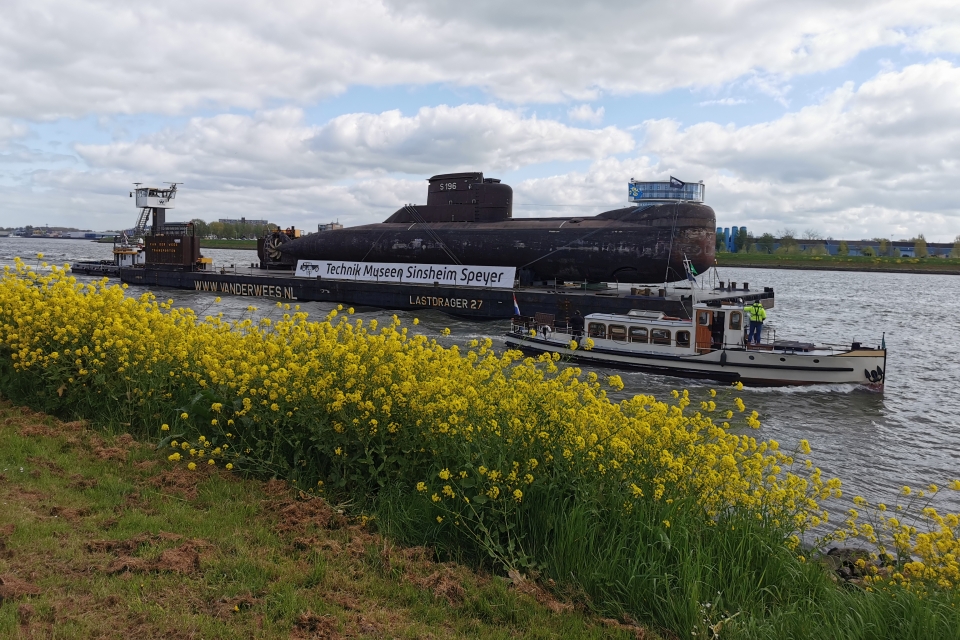Dutch transport company Royal Van der Wees Group is transporting the German submarine U-17 from Kiel to the Technik Museum Sinsheim Speyer. After having reached Van der Wees in Dordrecht from Kiel through the North Baltic Channel and across the North Sea, the transport took a tour to Rotterdam on 2 May before continuing to Germany next week.
This morning, 2 May, the pontoon carrying the former German submarine sailed from Dordrecht to Rotterdam to pass under the famous Erasmusbrug. After that, the transport returned to Dordrecht.
Watch the videos below of the transport passing the Drierivierenpunt (Three River Junction) of the Beneden-Merwede, the Oude Maas and the Noord near the municipalities of Papendrecht, Zwijndrecht and Dordrecht.
Also read: VIDEO: BigLift to deliver research station to Antartica
Submarine on display at Technik Museum
Van der Wees is carrying out the transport on behalf of Kübler Spedition GmbH and the Technik Museum Sinsheim Speyer, where the submarine will be on display. On Thursday, 11 May, the transit across the Waal/Rhine towards Nijmegen will begin. From there, the transport continues to Germany past Cologne Cathedral, the Loreley and the Deutsches Eck in Koblenz to Speyer.
The further course of this transport can be followed via live tracking on the website of the Technik Museum Sinsheim Speyer.
In Speyer, the submarine goes ashore in the natural harbour. It will be driven on a heavy-duty transport at walking speed in the direction of the Technik Museum. The submarine will then be given a temporary place in front of the Technik Museum Speyer to prepare for onward transport to Sinsheim from there. The submarine weighs about 500 tonnes.
Also read: Oceanco bypasses bridge problem and will install masts on Bezos’ new megayacht in Rotterdam
U-17 submarine
The U-17 is a class 206A submarine that is around 48 metres long, with a draught of 4.6 metres, and displaces roughly 500 tonnes when submerged. Submarines were mainly deployed in the North Sea and Baltic Sea, and then, later, after the conversion to the class 206 Alpha, in the Mediterranean as well.
The U-17 had a very special mission and, together with the U-26, was the first German submarine in American waters after the Second World War and the first submarine to enter the port of Baltimore after the last submarine anchored there in 1916 (the merchant submarine U-Deutschland).
The Type 206 submarines have served in the German Navy for almost forty years – more than any other submarine before – and after such a long time it would have weighed on the souls of the generations of crew members if people had not preserved them and made them accessible for posterity. The “submariners association U-17”, consisting of former crew members, will later take care of the preservation of the submarine as an exhibit.
Pictures and footage by SWZ|Maritime.










